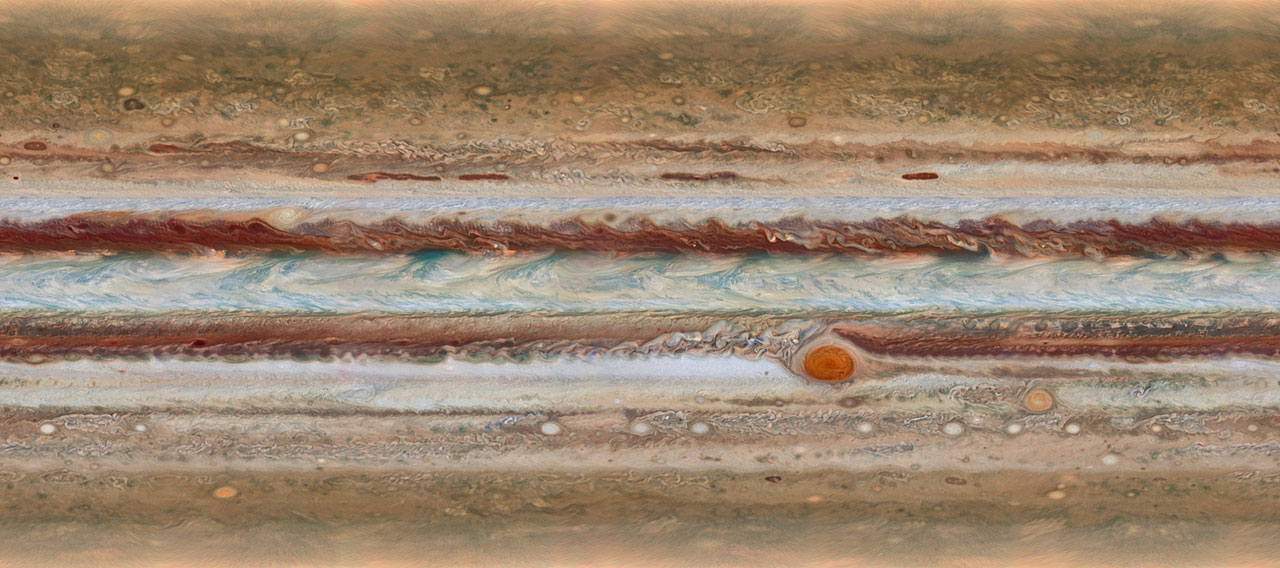Hubble telescopes show Jupiter’s pictures of the Big Red Spot

Astronomers, using the capabilities of the Hubble telescope, created a new map of the surface of Jupiter, which perfectly demonstrates the changes that the Big Red Spot has undergone. The images also show a rare undulating structure of the atmosphere of Jupiter, which has not been observed for decades. The new image is the first of a series of "portraits" of the planets of the solar system, compiled annually. Such images help to see changes, and scientists actively use them to study such changes.
On the "map" of Jupiter, clouds, storms and manifestations of the winds are clearly visible. Specialists used Wide Field Camera 3 to capture these images.the Hubble telescope, as a result of which two maps of the whole planet were created at once. These maps help determine the speed of the Jupiterian winds, discover new phenomena in the atmosphere of the gas giant and track changes.
Thanks to the photo, it becomes clear that the huge storm raging on the surface of Jupiter for at least three hundred years continues to decrease. The storm is known as the Great Red Spot, and it is clearly visible in almost any photograph of Jupiter. Over time, it decreased, but now the decrease in the size of the object has slowed down, now the diameter of the “Spot” is only 240 kilometers less than in 2014. When you click, the image will open in full size. Changing the size of the spot is not the only change recorded by Hubble. In the center of the spot, which, incidentally, has a not so saturated color, you can see an unusual object - a foggy "fiber" passing through all this atmospheric formation. By the way, the wind speed here reaches 540 kilometers per hour.

There is another interesting object to study. So, in the north of the equator of the planet, the researchers discovered a giant wave-like structure similar to the object discovered back in 1977 (Voyager 2 photographed this structure while flying past the planet). Scientists have not seen anything like this until today. Photos of Voyager 2 in this case were not very high-quality, and experts believed that this was just an artifact of the image, but it turned out that this was a real phenomenon.
Now there is an assumption that this is a baroclinic wave, something similar to what exists in the Earth’s atmosphere, arising during the formation of cyclones.
Jupiter is being monitored by the Outer Planet Atmospheres Legacy (OPAL) program.
